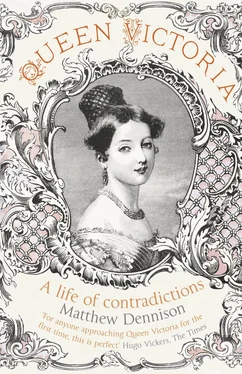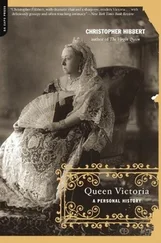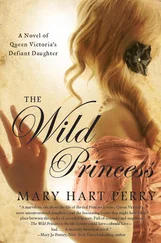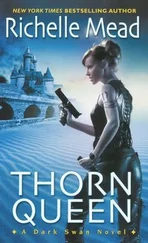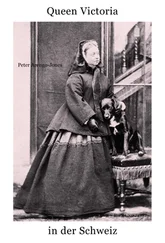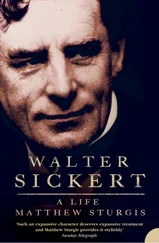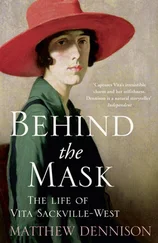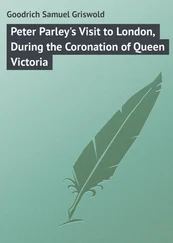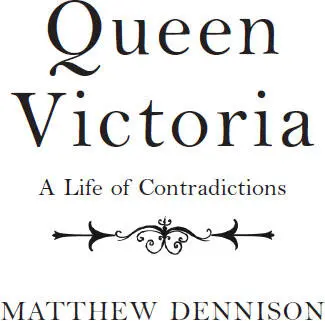

For Gráinne and Aeneas, with all love
‘I could tell you my adventures – beginning from this morning,’ said Alice a little timidly: ‘but it’s no use going back to yesterday, because I was a different person then.’
Lewis Carroll, Alice’s Adventures in Wonderland , 1865
‘Elizabeth [I] was a great Queen but a bad woman ; and even in her royal capacity she erred sometimes; she had a very great idea of her prerogative and was more arbitrary even than her tyrannical father.’
Princess Victoria, c .1834
CONTENTS
TITLE PAGE
DEDICATION For Gráinne and Aeneas, with all love
EPIGRAPH ‘I could tell you my adventures – beginning from this morning,’ said Alice a little timidly: ‘but it’s no use going back to yesterday, because I was a different person then.’ Lewis Carroll, Alice’s Adventures in Wonderland , 1865 ‘Elizabeth [I] was a great Queen but a bad woman ; and even in her royal capacity she erred sometimes; she had a very great idea of her prerogative and was more arbitrary even than her tyrannical father.’ Princess Victoria, c .1834
QUEEN VICTORIA’S FAMILY TREE: A SIMPLIFIED VERSION
LIST OF ILLUSTRATIONS LIST OF ILLUSTRATIONS 1. Victoria, Duchess of Kent with Princess Victoria by Sir William Beechey, 1821 ( The Royal Collection © 2011 Her Majesty Queen Elizabeth II / The Bridgeman Art Library ) 2. Victoria Regina by Henry Tanworth Wells, 1887 ( The Royal Collection © 2011 Her Majesty Queen Elizabeth II / The Bridgeman Art Library ) 3. Queen Victoria by Sir Francis Grant, 1843 ( The Crown Estate / The Bridgeman Art Library ) 4. Queen Victoria by Alfred Edward Chalon, 1838 ( Scottish National Portrait Gallery, Edinburgh, Scotland / The Bridgeman Art Library ) 5. Lord Melbourne with Queen Victoria’s dog, Islay, by Queen Victoria ( The Royal Collection © 2011 Her Majesty Queen Elizabeth II / The Bridgeman Art Library ) 6. Prince Albert by Emil Wolff, 1844 ( The Royal Collection © 2011 Her Majesty Queen Elizabeth II / The Bridgeman Art Library ) 7. Queen Victoria and Prince Albert at the Bal Costumé of 12 May 1842 by Sir Edwin Landseer, 1842–6 ( The Royal Collection © 2011 Her Majesty Queen Elizabeth II / The Bridgeman Art Library ) 8. To the Queen’s Private Apartments , English School, 19th century ( The Royal Collection © 2011 Her Majesty Queen Elizabeth II / The Bridgeman Art Library ) 9. Queen Victoria with her Four Eldest Children by Franz Xaver Winterhalter, 1845 ( The Royal Collection © 2011 Her Majesty Queen Elizabeth II / The Bridgeman Art Library ) 10. Badge of the Order of Victoria and Albert by Tommaso Saulini, c .1863 ( The Royal Collection © 2011 Her Majesty Queen Elizabeth II / The Bridgeman Art Library ) 11. Queen Victoria, Alice and Louise with portrait of Albert, 1863 ( © Hulton Royals Collection / Getty Images ) 12. Her Majesty at Osborne in 1866 by Sir Edwin Landseer, 1867 ( The Royal Collection © 2011 Her Majesty Queen Elizabeth II / The Bridgeman Art Library ) 13. Queen Victoria with a spinning wheel, 1875 ( © Hulton Royals Collection / Getty Images ) 14. The Family of Queen Victoria in 1887 by Laurits Regner Tuxen, 1887 ( The Royal Collection © 2011 Her Majesty Queen Elizabeth II / The Bridgeman Art Library ) 15. Queen Victoria by Jean Joseph Benjamin-Constant, 1899 ( The Royal Collection © 2011 Her Majesty Queen Elizabeth II / The Bridgeman Art Library )
INTRODUCTION
CHAPTER 1: ‘Pocket Hercules’
CHAPTER 2: ‘Fresh and innocent as the flowers in her own garden’
CHAPTER 3: ‘Constant amusements, flattery, excitements and mere politics’
CHAPTER 4: ‘Every quality that could be desired to render me perfectly happy’
CHAPTER 5: ‘The cares of Royalty pressed comparatively lightly’
CHAPTER 6: ‘The pain of parting’
CHAPTER 7: ‘Unavailing regrets’
CHAPTER 8: ‘A Highland Widow’
CHAPTER 9: ‘Wisest counsellors’
CHAPTER 10: ‘Mother of many nations’
CHAPTER 11: ‘All that magnificence’
PICTURE SECTION
NOTES
BIBLIOGRAPHY
INDEX
ALSO BY MATTHEW DENNISON
COPYRIGHT
ABOUT THE PUBLISHER

1. Victoria, Duchess of Kent with Princess Victoria by Sir William Beechey, 1821 ( The Royal Collection © 2011 Her Majesty Queen Elizabeth II / The Bridgeman Art Library )
2. Victoria Regina by Henry Tanworth Wells, 1887 ( The Royal Collection © 2011 Her Majesty Queen Elizabeth II / The Bridgeman Art Library )
3. Queen Victoria by Sir Francis Grant, 1843 ( The Crown Estate / The Bridgeman Art Library )
4. Queen Victoria by Alfred Edward Chalon, 1838 ( Scottish National Portrait Gallery, Edinburgh, Scotland / The Bridgeman Art Library )
5. Lord Melbourne with Queen Victoria’s dog, Islay, by Queen Victoria ( The Royal Collection © 2011 Her Majesty Queen Elizabeth II / The Bridgeman Art Library )
6. Prince Albert by Emil Wolff, 1844 ( The Royal Collection © 2011 Her Majesty Queen Elizabeth II / The Bridgeman Art Library )
7. Queen Victoria and Prince Albert at the Bal Costumé of 12 May 1842 by Sir Edwin Landseer, 1842–6 ( The Royal Collection © 2011 Her Majesty Queen Elizabeth II / The Bridgeman Art Library )
8. To the Queen’s Private Apartments , English School, 19th century ( The Royal Collection © 2011 Her Majesty Queen Elizabeth II / The Bridgeman Art Library )
9. Queen Victoria with her Four Eldest Children by Franz Xaver Winterhalter, 1845 ( The Royal Collection © 2011 Her Majesty Queen Elizabeth II / The Bridgeman Art Library )
10. Badge of the Order of Victoria and Albert by Tommaso Saulini, c .1863 ( The Royal Collection © 2011 Her Majesty Queen Elizabeth II / The Bridgeman Art Library )
11. Queen Victoria, Alice and Louise with portrait of Albert, 1863 ( © Hulton Royals Collection / Getty Images )
12. Her Majesty at Osborne in 1866 by Sir Edwin Landseer, 1867 ( The Royal Collection © 2011 Her Majesty Queen Elizabeth II / The Bridgeman Art Library )
13. Queen Victoria with a spinning wheel, 1875 ( © Hulton Royals Collection / Getty Images )
14. The Family of Queen Victoria in 1887 by Laurits Regner Tuxen, 1887 ( The Royal Collection © 2011 Her Majesty Queen Elizabeth II / The Bridgeman Art Library )
15. Queen Victoria by Jean Joseph Benjamin-Constant, 1899 ( The Royal Collection © 2011 Her Majesty Queen Elizabeth II / The Bridgeman Art Library )
ON THE EVE of Queen Victoria’s coronation, in June 1838, Charles Greville committed to his diary a memorable description of the capital. ‘It is as if the population had been on a sudden quintupled; the uproar, the confusion, the crowd, the noise, are indescribable. Horsemen, footmen, carriages squeezed, jammed, intermingled … not a mob here and there but the town all mob … the park one vast encampment … and still the roads are covered, the railroads loaded with arriving multitudes.’ 1Remove the horses and Greville’s picture is recognisable to the modern reader familiar with London in the grip of royal fervour. The Times attempted to unravel the attitude of Greville’s ‘mob’: ‘They thought of [Victoria] not as an individual to be loved with headlong zeal or played upon by corrupt adulation … they regarded her as in herself an institution .’ 2Victoria’s success over the course of a long reign was to unite, to the benefit of both, the individual and the institution. In a very personal sense, the monarchy became ‘Victorian’: in the minds of many of Victoria’s subjects, the throne acquired what they understood as her own virtues. This symbiosis invested the British Crown with a tangibly human aspect at the same time as exalting Victoria herself as an archetype and exemplar of all that was laudable in a woman and a ruler. It was partly good fortune, partly born of a sympathetic popular mindset shaped by culture and economics. As we shall see, Victoria’s behaviour did not consistently merit approbation, which, throughout her final decades and beyond, came close to idolatry.
Читать дальше
